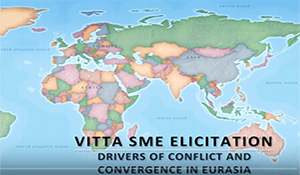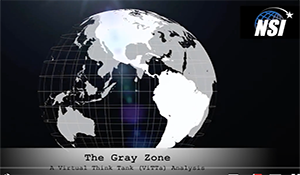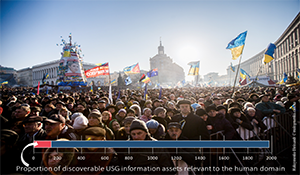
Gray Zone Trends in Colombia, Libya and Ukraine
Quantifying Gray Zone Conflict: (De-)escalatory Trends in Gray Zone Conflicts in Colombia, Libya and Ukraine. Author | Editor: Koven, B., Piplani, V., Sin, S. & Boyd, M. (START). Executive Summary This report employs frequentist statistical analysis in order to model the effects of various factors, including the type of actors (state, violent non-state actor (VNSA) […]
Continue Reading
US Discoverable Government Information Assets Directory
US-DiGIA: Overview and Methodology of US Discoverable Government Information Assets Directory. Author | Editor: Pagano, S. (NSI, Inc.). Executive Summary The United States Government possesses a vast store of information assets that can be leveraged to inform a variety of problem sets, and can be used by a wide range of governmental actors in the […]
Continue Reading
GCC Nations: Impediments to Cooperation
Question (R4.8): Are there impediments to cooperation amongst GCC nations that reduce their effectiveness towards undesirable or adverse regional issues? If so, how could impediments be overcome? Author | Editor: Aviles, W. (NSI, Inc.). Executive Summary At the time of the writing of this executive summary, the GCC (Gulf Cooperation Council) has experienced a diplomatic […]
Continue Reading
Impact of Kurdish Independence in the Region
1. How have regional governments responded to Ma’soud Barzani’s announcement of a referendum on Iraqi Kurdish independence to be held in September? 2. How have different sub-state groups responded, to include different Kurdish factions in Iraq and across borders? 3. How are the Kurds using the independence referendum to leverage their interests? Author | Editor: […]
Continue Reading
China’s Expansion into South Asia, Middle East and Africa
Question (R4.9): What are the medium to long term implications to US interests and posture of China’s economic, diplomatic and military expansion into South Asia, Middle East and Africa? Author | Editor: Hayes Ellis, D. (University of Maryland). Executive Summary “It’s the Economy Stupid!” Perhaps unsurprisingly, all the contributors to this question devoted attention to […]
Continue Reading
Examining Drivers of Conflict and Convergence in Eurasia
Author | Editor: Popp, G. (NSI, Inc). The EUCOM video highlights work NSI did in collaboration with the Strategic Multilayer Assessment (SMA) office and the US Department of Defense to apply NSI’s Virtual Think Tank (ViTTa) methodology to examine potential drivers of conflict and convergence in Eurasia over the next 5-25 years. For access to […]
Continue Reading
Defining and Validating the Gray Zone Using ViTTa
Author | Editor: Popp, G. (NSI, Inc). The Defining The Gray Zone video discusses how the gray zone is a conceptual space between peace and war, where activities are typically ambiguous or cloud attribution and exceed the threshold of ordinary competition, yet intentionally fall below the level of large-scale direct military conflict. This video highlights […]
Continue Reading
Will Physical Defeat of ISIS Eliminate Threat it Poses
Author | Editor: Popp, G. (NSI, Inc). The Physical Defeat of ISIS video addresses if a physical defeat of ISIS fully eliminate the threat it poses? Highlighting some of the work NSI has conducted as part of a Strategic Multilayer Assessment (SMA) team Reach Back Cell in support of USCENTCOM, this video discusses the future […]
Continue Reading
Senturion Modeling in Support of Project Noor
Author | Editor: Popp, G. (NSI, Inc). The Senturion Modeling Project Noor video provides a brief overview of the Senturion modeling and simulation effort in support of the Strategic Multi-Layer Assessment (SMA) team’s Project Noor. For more information on Project Noor itself, please visit: Project Noor Video
Continue Reading
US-DiGIA: USG Discoverable Information Terrain
US-DiGIA: Mapping the USG Discoverable Information Terrain. Author | Editor: Bragg, B., Pagano, S. & Stevenson, J. (NSI, Inc.). Executive Summary The United States currently faces a complex and dynamic security environment. States are no longer the only critical actors in the international arena; rather, a diverse range of non-state entities also has the potential […]
Continue Reading